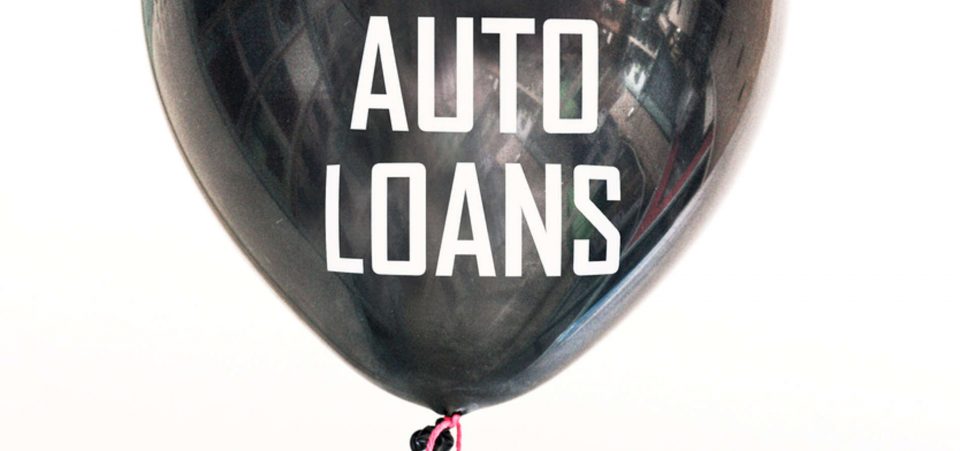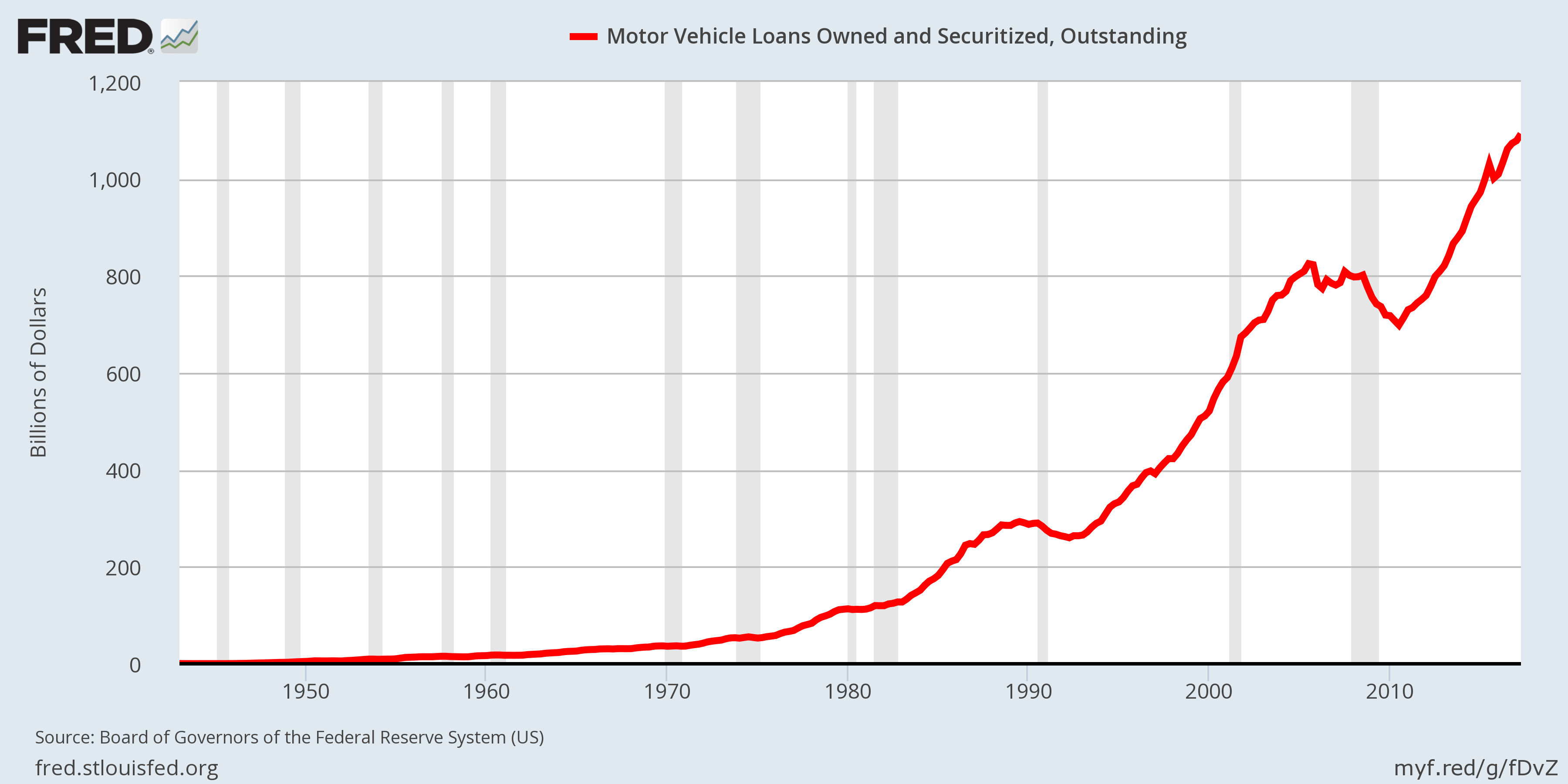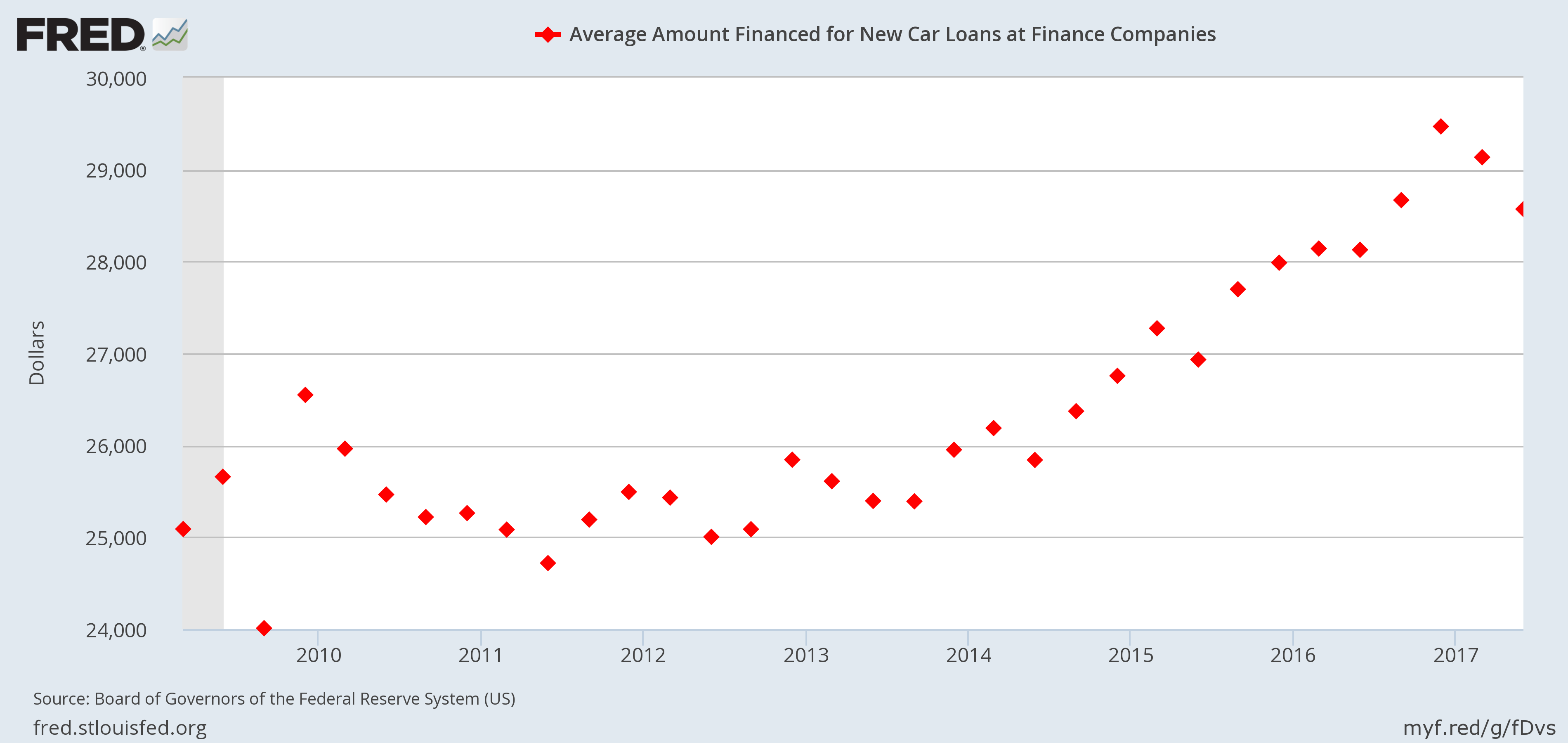Auto Loans Surging: How Long Can This Continue?
There’s a bubble in the making, and no one’s talking about it: auto loans. When it pops, it could have dire consequences. The mainstream media fails to report on this, but it could become a major problem. Auto loans are increasing at an alarming pace.
Consider this: in the first quarter of 2010, just after the financial crisis, the total auto loans amount stood at $705.0 billion. Fast forward to the second quarter of 2017, and this amount hit almost $1.2 trillion. (Source: “Household Debt And Credit Report (Q2 2017),” Federal Reserve Bank of New York, last accessed November 6, 2017.)
Simple math here: auto loans have increased by over 73% since 2010. Look below at the chart to get some idea. It shows the long-term trajectory of car loans in the United States.
Lower Credit Scores Allowed in Order to Qualify for Car Loans
If soaring auto debt was the only issue, it wouldn’t be that worrisome. What happens as the loaned amount increases, however, is worth keeping an eye out for.
In the first quarter of 2010, the median credit score of all loans issued in the U.S. was 714. Anything above a credit score of 700 is considered a good score, and it’s very likely that the lender will get its money back.
In the second quarter of 2017, however, the median credit score for people getting loans was 698. A credit score between 650 and 699 is considered “fair,” and there is higher risk of defaults. The median credit score for loan recipients has been declining since the financial crisis ended.
Keep in mind, this is just the median number; it may not be telling the entire picture.
Over the years, in order to give out more loans, lenders have gotten into bad habits. We have been seeing a lot of loans given out to subprime borrowers (those who have a credit score of below 640). Also, in order to make payments more affordable, lending companies increased the lengths of their loans.
Furthermore, the size of the loans also increased. Look at the chart below; it shows the average amount of money that was lent out to finance a car. In the second quarter of 2017, it was around $28,500. Just after the 2007–2009 recession, it was around $24,000.
What’s Next?
Dear reader, bubbles can continue inflating for a while. But, once they pop, they send waves of uncertainty throughout the economy.
You see, thanks to low interest rates, there has been a boom in car loans. You really have to question whether this can continue much longer, especially as interest rates go higher. It wouldn’t be shocking to see the music stop in the auto loans market as rates rise sooner rather than later.
Looking at all this, one could be saying, “Auto loans are just $1.2 trillion; it’s not really a big deal.”
Yes, it is fairly small, relative to the mortgage market. However, it’s important to keep in mind that the loans fuel auto sales. If consumers don’t get loans, will the automakers be able to sell more cars and still make profits?
Understand this: the auto loans market freezing could make a huge impact on the economy. Will automakers be able to support the staff they currently have if they are not selling cars? What happens to businesses and workers who depend on automakers thriving? Could auto part makers survive? Will their stock prices remain as high as they are now?
Investors, be very careful.








